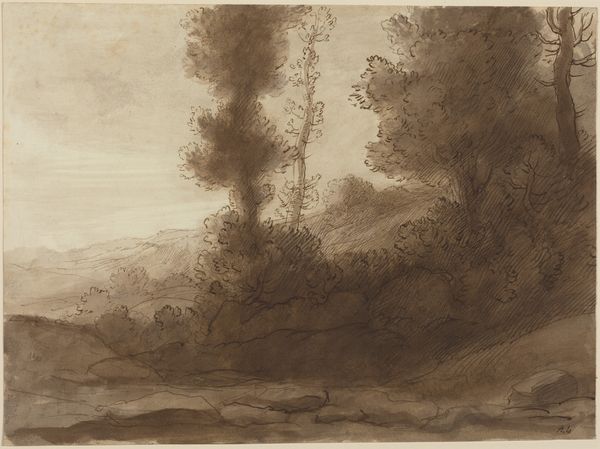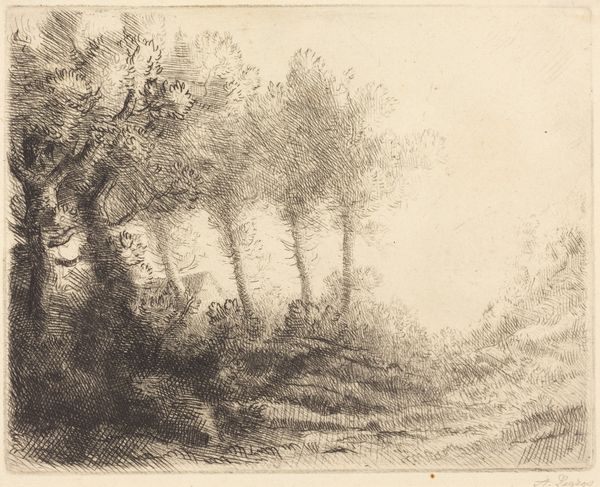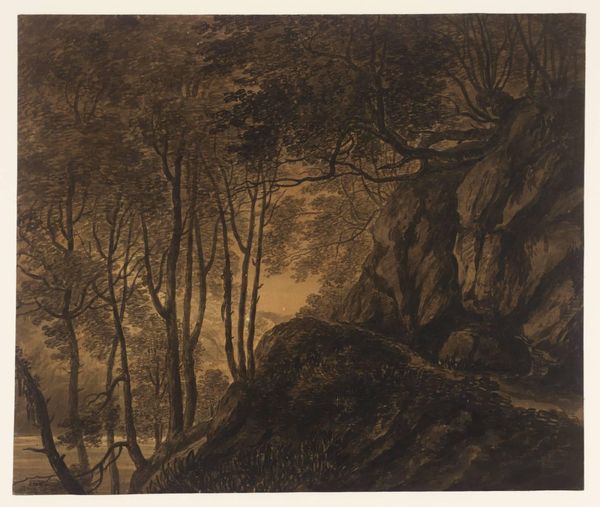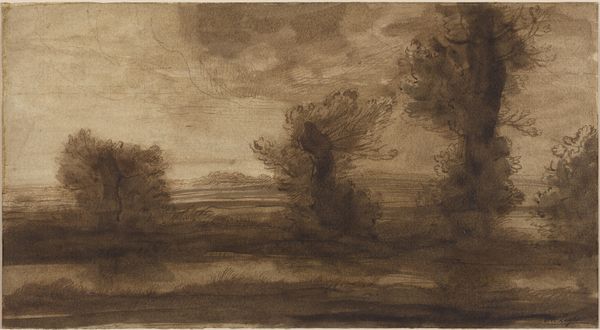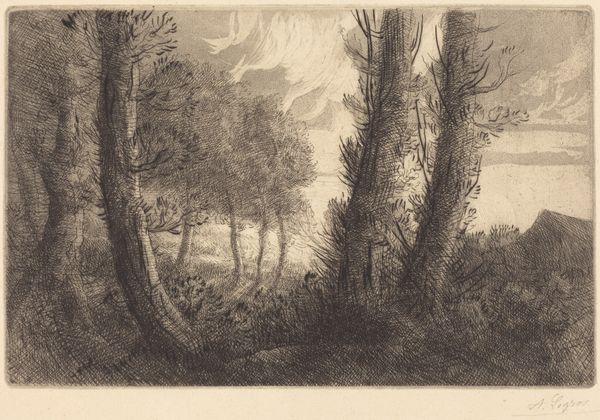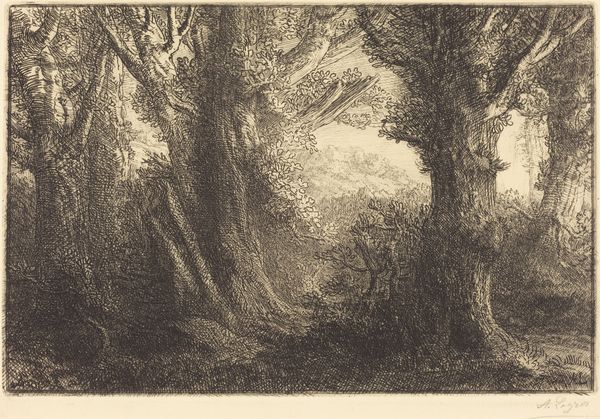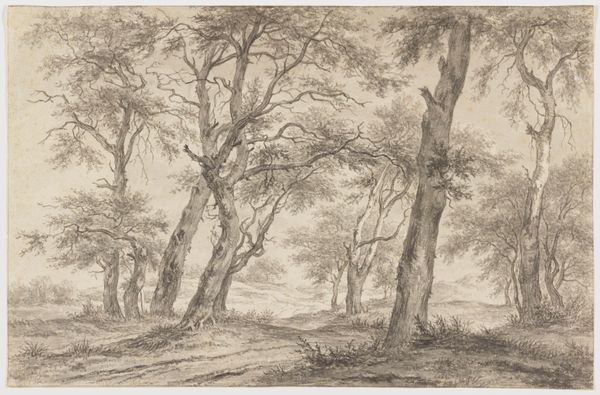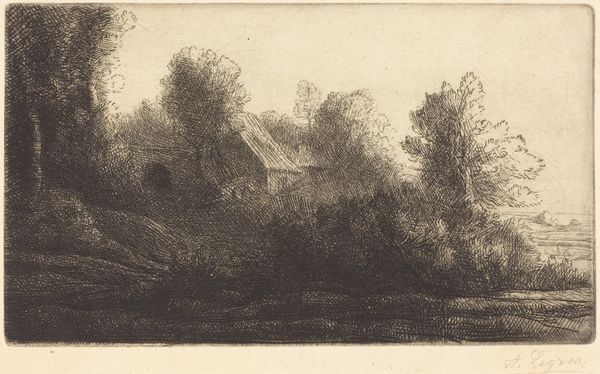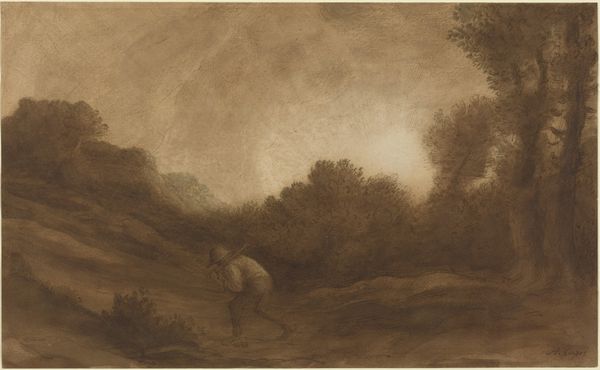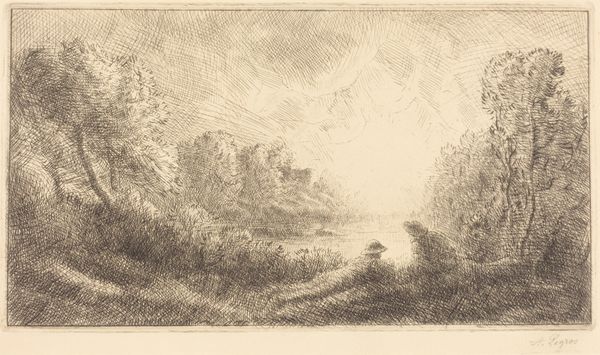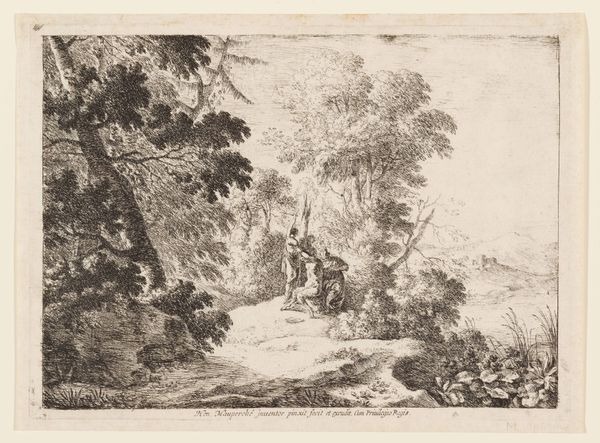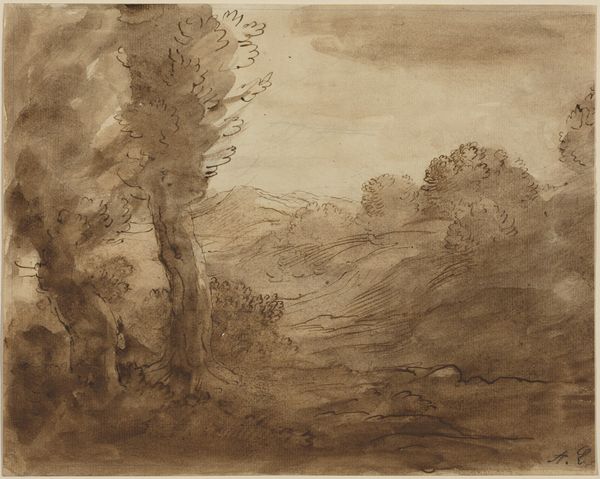
Water's Edge by Morning Light (Au bord de l'eau (Effet du matin))
0:00
0:00
print, etching
# print
#
etching
#
landscape
#
romanticism
Copyright: National Gallery of Art: CC0 1.0
Curator: Look at this peaceful scene; it feels both inviting and a little somber. Editor: This is "Water's Edge by Morning Light" by Alphonse Legros, created using etching techniques. There’s such delicacy to the rendering of light and shadow. Legros seems intent on drawing the viewer into a state of introspection. Curator: I can see that. The artist places us right on the banks of this river. But this seemingly calm depiction can be interpreted as an example of 19th-century European romanticism's relationship to nature, can't it? As a way of responding to industrial changes? Editor: Undeniably so. Consider the composition, the dark foreground of trees framing the hazy background – a bright opening promising possibility or maybe just more horizon. He creates this very deep visual space. Legros controls our eye completely. The horizontal lines in the distance seem unnatural somehow, but there they are. Curator: Yes, the etching method has been around for centuries, of course, but it becomes increasingly popularized during the Romantic period to make original designs, affordable versions, that common people can buy. Etchings were frequently included in portfolios or periodicals, providing increased accessibility to art among middle-class audiences. This work echoes the aesthetic emphasis on emotional intensity and individual experience associated with the Romantics. Editor: That texture... those lines. He truly uses the character of the medium to build our sensation of touch, like you could really grab the tall grasses on the riverbank. There is just enough darkness for us to intuit the light. And these dramatic diagonal sweeps add great depth to the composition. Curator: I'm also struck by how the artist balances the natural elements and this implied access to the original print afforded people new venues to experience art in that moment. One thinks also about the growing number of natural sciences institutions exhibiting collections. "Water's Edge" taps into both an emerging public fascination with the beauty of nature and the expansion of museums that democratized collections. Editor: Legros gives us something precious: A quiet escape from a changing, industrious world. This piece does, I think, draw attention to art’s broader availability, though I feel its appeal rests within its striking composition. Curator: And how the expansion of art is a reflection of industrial changes. I never tire of how context shapes the production of work like this.
Comments
No comments
Be the first to comment and join the conversation on the ultimate creative platform.
